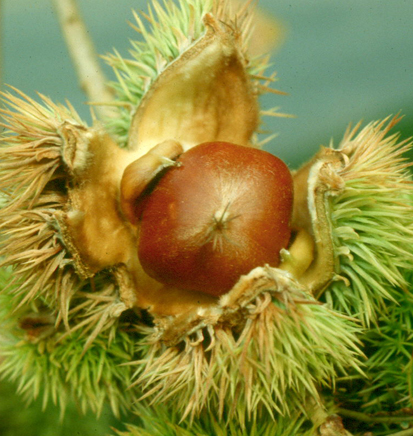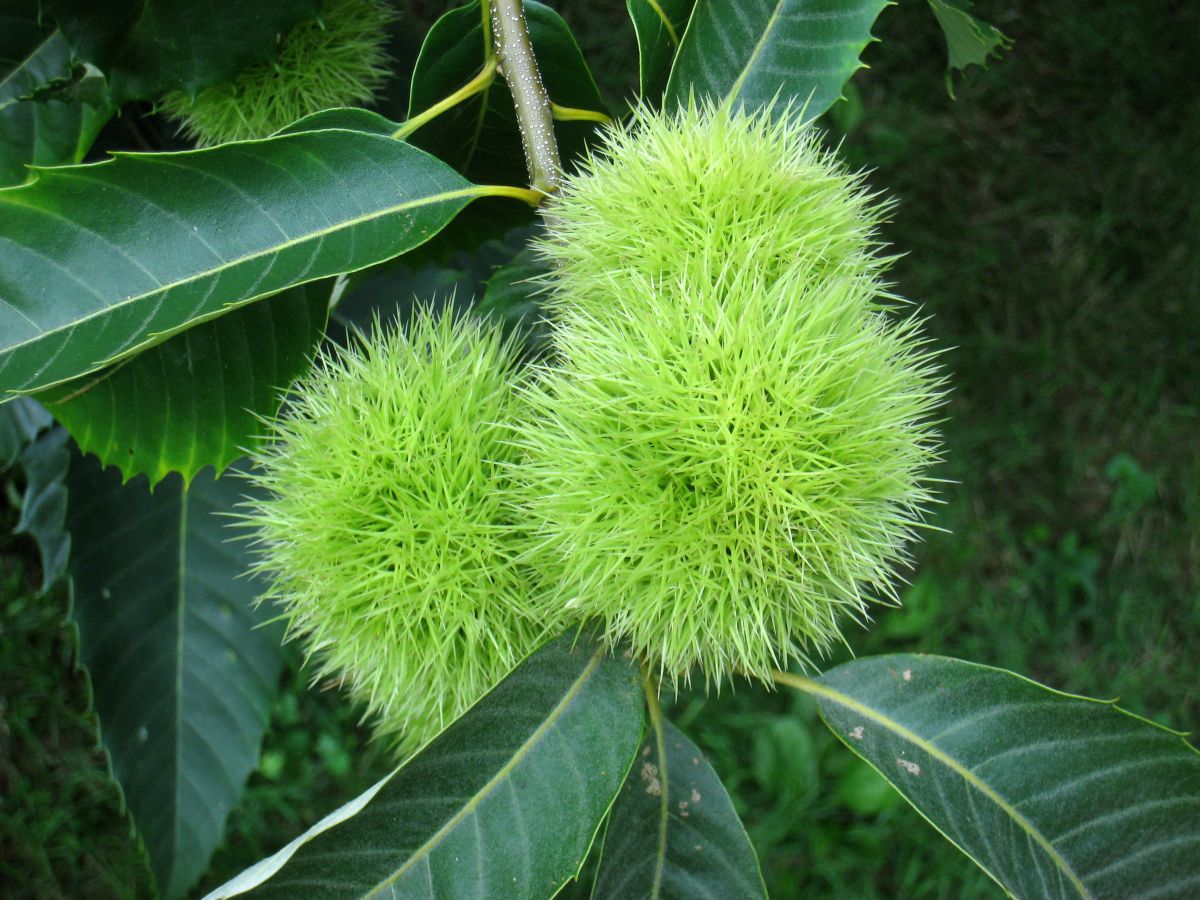Chinese Chestnuts
American chestnuts (Castanea dentata), once prominent in the eastern U.S. landscape, all but disappeared in the mid-1900s when chestnut blight eradicated nearly all of these popular trees. Blight-resistant varieties of Chinese chestnut (Castanea mollissima) are viable alternatives for commercial chestnut production. Chestnuts are low in fat compared with other nuts and are receiving attention from the health food industry. These nuts are eaten roasted, boiled, or sautéed. Chestnuts may be incorporated into various recipes, such as stuffing, vegetable dishes, casseroles, and desserts. Dried chestnuts can be ground into flour as a substitute for wheat flour or corn meal.
Marketing
 The most promising outlets for chestnuts include the domestic fresh (roasting) markets, upscale restaurants, and ethnic/specialty food groceries. Chestnuts can also be used to make gluten-free chestnut flour for sale as a specialty food. Specific fresh chestnut markets include restaurants, roadside stands, on-farm markets, farmers markets, retail groceries, and specialty food retailers. The University of Missouri Center for Agroforestry reported selling direct to consumers from on-farm stands and farmers markets, and selling direct to restaurants, as the most common marketing methods. Chestnut growers in the Eastern U.S. have also sold chestnut value-added products online. Local growers who can consistently supply high quality, good tasting, and weevil-free chestnuts have the advantage of freshness over imported chestnuts, which may be viewed by consumers as expensive or of lesser quality. However, many U.S. consumers are unfamiliar with chestnuts, and chestnut growers will need to be willing to educate and promote their crop to a new generation of consumers.
The most promising outlets for chestnuts include the domestic fresh (roasting) markets, upscale restaurants, and ethnic/specialty food groceries. Chestnuts can also be used to make gluten-free chestnut flour for sale as a specialty food. Specific fresh chestnut markets include restaurants, roadside stands, on-farm markets, farmers markets, retail groceries, and specialty food retailers. The University of Missouri Center for Agroforestry reported selling direct to consumers from on-farm stands and farmers markets, and selling direct to restaurants, as the most common marketing methods. Chestnut growers in the Eastern U.S. have also sold chestnut value-added products online. Local growers who can consistently supply high quality, good tasting, and weevil-free chestnuts have the advantage of freshness over imported chestnuts, which may be viewed by consumers as expensive or of lesser quality. However, many U.S. consumers are unfamiliar with chestnuts, and chestnut growers will need to be willing to educate and promote their crop to a new generation of consumers.
Production
 Chestnut trees may be established from seeds, seedlings, or grafted trees. Planting grafted trees is preferred for consistency in yield, ripening, size, and quality of the nuts produced. While seedling trees are generally more readily available and less expensive to purchase, grafted trees come into bearing sooner than seedlings. Grafted trees should have a genetically similar rootstock to avoid delayed graft incompatibility several years after planting. Grafted tree survival is more likely when the rootstock is a seedling of the scion cultivar. There are a number of Chinese chestnut cultivars and hybrids that are well adapted to Kentucky conditions. Nut characteristics, such as size, flavor, cracking quality, and storage life can vary among varieties. It is particularly important to choose selections resistant to chestnut blight, and cultivars that produce the largest nuts such as Qing. Most markets require large chestnuts. Chinese chestnuts are self-sterile, so two or more different cultivars are required for good pollination.
Chestnut trees may be established from seeds, seedlings, or grafted trees. Planting grafted trees is preferred for consistency in yield, ripening, size, and quality of the nuts produced. While seedling trees are generally more readily available and less expensive to purchase, grafted trees come into bearing sooner than seedlings. Grafted trees should have a genetically similar rootstock to avoid delayed graft incompatibility several years after planting. Grafted tree survival is more likely when the rootstock is a seedling of the scion cultivar. There are a number of Chinese chestnut cultivars and hybrids that are well adapted to Kentucky conditions. Nut characteristics, such as size, flavor, cracking quality, and storage life can vary among varieties. It is particularly important to choose selections resistant to chestnut blight, and cultivars that produce the largest nuts such as Qing. Most markets require large chestnuts. Chinese chestnuts are self-sterile, so two or more different cultivars are required for good pollination.

